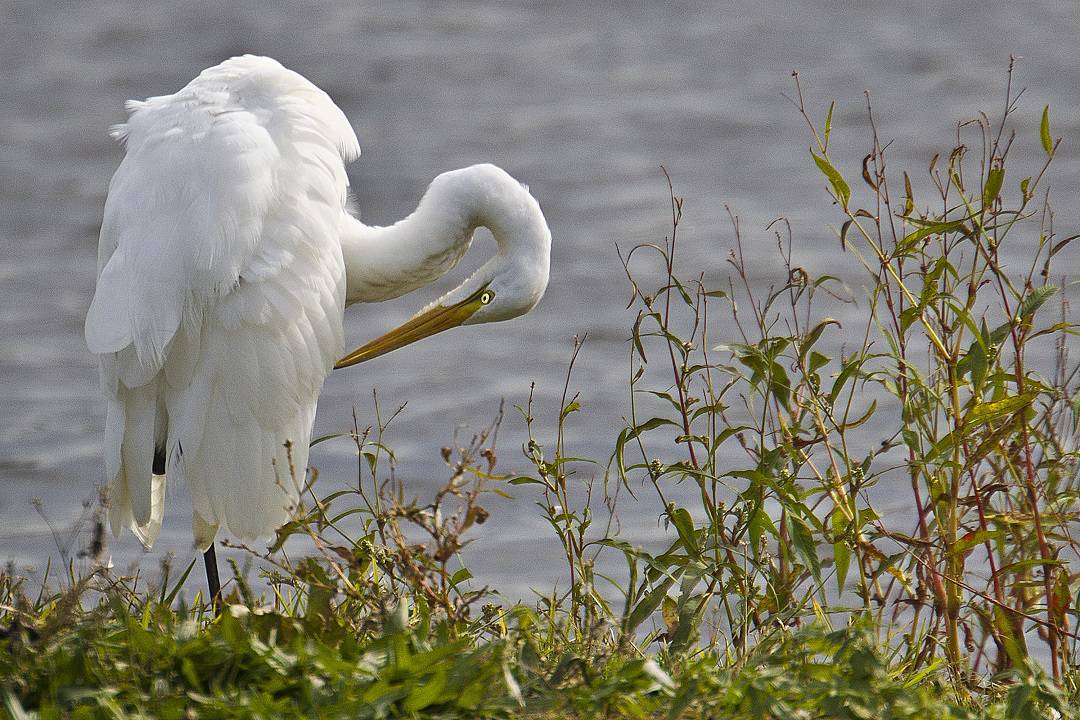There was a moment last summer when I felt I’d really touched a group of young birders. I was leading a hike with some day-campers on a mid-July morning with the simple intention to teach them about a few of the backyard birds we’d (hopefully) find.
Midway through the hike we encountered a steep hill, and in the heat, the kids and I didn’t want to go much further. I made the decision to take a short break in the shade of a nearby tree; however, I wasn’t about to waste this time letting the kids sit around and twiddle their thumbs. No, we were going to learn.
I removed the iPad and speaker from my backpack and played a few bird vocalizations. After playing the song of the Northern Cardinal, an actual cardinal flew out of the bushes and perched right in the tree we were all sitting under. I felt bad about disturbing the bird’s day, but what an educational opportunity!
At this point, I’d gotten a few of the kids intrigued, but many were still unimpressed. Then, a boy in the group shouted out, “Play the Barn Owl call!” Oh, good idea. I remembered playing the call for this particular camper earlier in the summer, and he must have felt it was worth sharing.
I found the Barn Owl vocalization on my iPad, played it, and looked up to gauge the reactions. Some faces showed fascination — others terror — at the owl’s blood-curdling scream. The response was exactly what I’d hoped for, and I knew at that moment I’d grabbed everyone’s interest.
Invoking a sense of curiosity about the natural world is what I hope to do in every one of my programs with the Missouri River Bird Observatory (MRBO) — especially its newly formed Missouri Young Birders Club (MYBC). The MYBC is part of a framework called the Young Birders Network, which has chapters all over the country designed to encourage the next generation of naturalists.

Birding can get kids engaged with nature in a meaningful way.
Why Birding?
The benefits to being outside in nature are numerous. Growing evidence supports that exposure to natural environments, or aspects of the natural environment, can help improve mental health. People who live closer to greenspaces have been shown to have lower levels of stress and reduced symptoms of depression and anxiety. Studies have also shown that interacting with nature can improve cognition for children with attention deficits.
And what’s a great way to get outside and acquire these health benefits? Birding.
You can find birds anywhere and everywhere, which makes them very accessible. They fly around and sing and call, which makes them relatively easy to find. Birds are cute, wacky, diverse, beautiful, and interesting, which is why birding is a great avenue toward getting your kids outside and engaging with nature in a meaningful way.
Also, birding, which by definition is the activity of watching and identifying birds, doesn’t require a lot of equipment, so you and your children can do it on a budget. To get started, all you really need is a pair of binoculars, a small notebook, and a pencil or pen. If you don’t have binoculars, birding groups often have a few extra pairs to loan out.
Speaking of which, getting involved with a birding group or Audubon Society in your area is a great way to get started: you’ll learn where to go, improve your bird identification skills, and meet new people who also love the outdoors. Hopefully, your children will also learn the importance of taking action to conserve their habitats — perhaps through habitat clean-ups or restoration projects.
For more information about the MYBC, you can visit moyoungbirders.org. The club will provide field trips to local birding areas and opportunities for members to experience and conserve Missouri’s birds and enjoy the outdoors with their peers.
Where to Go
Want to get you kids excited about birds and birding? Try these local spots.
Riverlands Migratory Bird Sanctuary
Located in West Alton, Missouri, on 3,700 acres near the Mississippi River and its confluence with the Missouri. Explore 8.5 miles of trail or visit the Audubon Center at Riverlands, which offers 140 degrees of wildlife viewing through its large windows and high-powered scopes. riverlands.audubon.org
Two Rivers National Wildlife Refuge
Encompassing 9,225 acres of riverine and floodplain habitat scattered around the confluence of the Illinois and Mississippi rivers in Brussels, Illinois. It’s an important stopover for hundreds of thousands of ducks and geese each fall, with a visitor center and ranger-led activities. fws.gov/refuge/two_rivers/
World Bird Sanctuary
Part rescue center, part ariary, this facility boasts a breeding barn, behavioral training center, and wildlife hospital in addition to live natural displays and seasonal shows and special events on 305 acres in Valley Park, Missouri. worldbirdsanctuary.org
The Great Missouri Birding Trail
The Great Missouri Birding Trail includes a St. Louis Trail divided into two portions: a St. Louis Metro Trail and a Greater St. Louis Trail. The Metro Trail highlights birding opportunities no more than 10 minutes from downtown. The Greater St. Louis Trail features birding sites that are still in the area but farther off the beaten path. greatmissouribirdingtrail.com
Author: Paige Witek
Featured image: Courtesy of George Albright


Leave A Comment